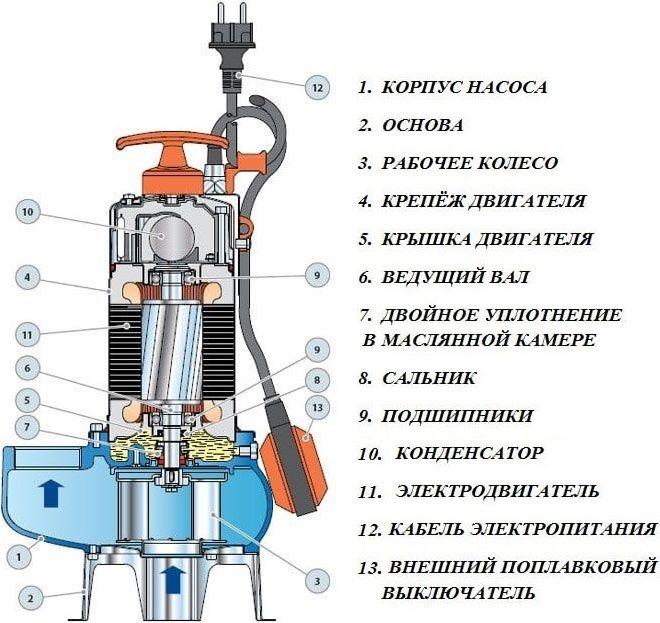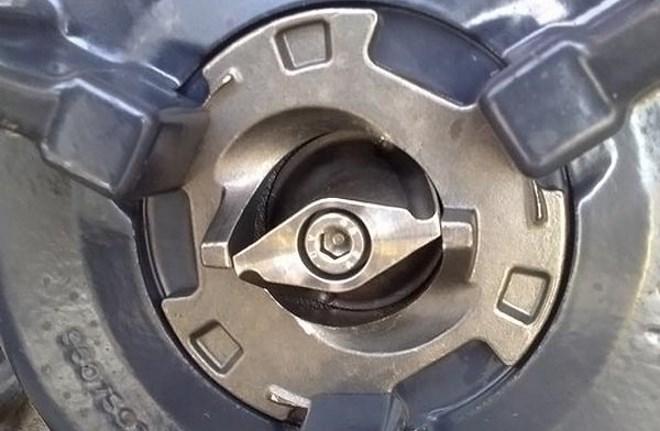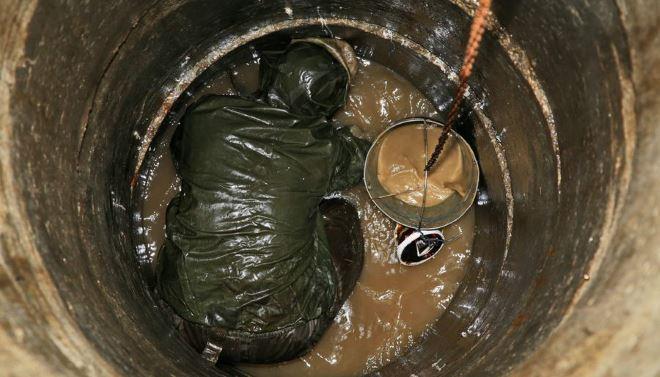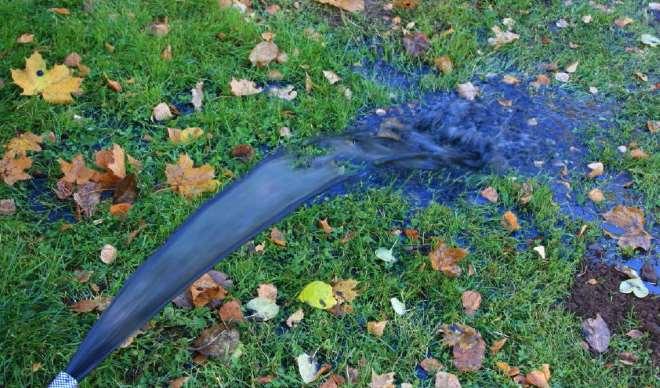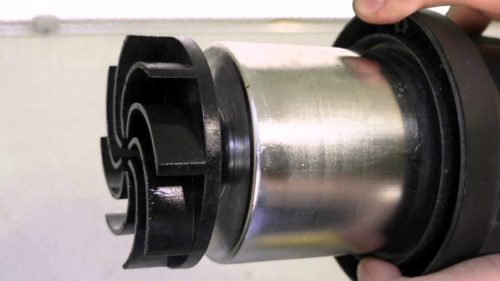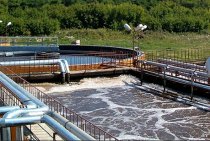Principle of operation and scope
By its design, the mud pump is a single unit consisting of an engine and a working mechanism placed in a common housing. An oil chamber and a block of sealing elements are located between the engine and the working mechanism of the high-pressure mud pump. A conventional submersible pump has a multi-channel design, while mud pumps have only one channel through which the contaminated liquid medium is pumped.
Household models of submersible mud pumps, as a rule, have a power of 1.5–1.75 kW; they can be used to pump contaminated liquid from wells up to 60 meters deep. The density of the liquid pumped by such high-pressure pumps should be 1.1–1.2 kgf/cm3, and the amount of impurities in it should reach 10%. The size of insoluble inclusions contained in the liquid pumped by domestic models of high-pressure mud pumps can reach up to 5-10 mm, and imported - up to 50 mm. During operation, the mud pump must be cooled, which is ensured by the liquid surrounding it. A special filter is installed on the suction pipe of the high-pressure mud pump, which limits the particle size of insoluble impurities contained in the pumped liquid.
Submersible mud pump device
Depending on the design, submersible mud pumps can be rotary or vibratory. The main working element of rotary pumps is an impeller with blades rotating on the rotor shaft inside the device housing. In vibration pumps, the role of such an element is performed by a steel membrane, which vibrates under the influence of alternating current and thereby creates a rarefaction of air in the working chamber. Vibration pumps, although they are characterized by lower power when compared with rotary devices, are characterized by higher reliability and a longer service life, since there are no rubbing parts in their design.
Among the high-pressure mud pumps, semi-submersible devices should be distinguished, designed to pump a medium with a density of 1.3–1.5 kgf/cm3. Such mud pumps, the working part of which can be made of corundum steel, ebonite or rubber, can operate at a temperature not exceeding 60 °.
For pumping media with a higher density, as well as media containing inclusions with a fibrous structure (fabrics, algae, etc.), mud pumping devices of a different type, fecal ones, are specially designed. In the design of such pumps, the inlet and outlet pipes of which are distinguished by expanded diameters, there is a special impeller that cuts fibrous inclusions into smaller fractions.
The fecal pump grinder is usually made of stainless steel
The most common applications for high pressure mud pumps are:
- pumping out used dirty water during construction work and maintenance of production processes (pumping out sludge water, etc.);
- a decrease in the level of groundwater after heavy rainfall, floods or flood situations;
- pumping out water and silt from basements, cellars, sewers and pools;
- cleaning of wells, replacement of polluted water in artificial reservoirs;
- organization of watering of green spaces growing on personal plots.
Competent operation and cleanliness of the well is the key to comfort and health
When choosing the necessary pump model, you should carefully study its instructions, since some drainage pumping units can initially pump only purified water, without impurities. With severe clogging, they quickly fail and need to be replaced, which entails financial expenses.
Silt cleaning is possible only with a pump pump, which is able to cope with the pumping of dirty liquid with various impurities, including fine fibers. Manual pumping and cleaning of wells is difficult due to the purchase of additional equipment, and also requires the involvement of assistants, because it will be very difficult to perform such a procedure alone.
This will take much longer than using 2 electric pumps (one for pumping sand, silt and other debris, the other for pumping dirty water), which will clean the well much better and safer.
Work will be simplified if the drainage pump is equipped with a float. This mechanism (float) is a device that rests on the surface of the water in the well, automatically turning off the pump when it reaches the bottom of the shaft.
Without a float, the operation of the pump or water pump must be monitored to avoid overheating the engine that is above the water level. In order for the well on your site to constantly please with clean water, it must be built in compliance with all the rules and regulations, and after construction, regularly clean and repair.
➤
Using a drain pump to clean a well
Cleaning the well with a drainage pump is a fairly common procedure, the regular implementation of which allows you to always get well water that is not contaminated with sand, silt and other foreign matter. Some owners of dachas and country houses, in whose household territories there is a source, acting in the old fashioned way, clean it manually, using a brush and a bucket on a rope for this purpose. Meanwhile, without using a cleaning pump in combination with this method, it will be quite difficult to solve the problem. In practice, in order to effectively purify well water, they try to apply both methods: first, using mechanical means, they clean the walls of the shaft, and then, using a high-pressure mud pump, they clean the water-bearing lens.
Manual cleaning of the well from large solid contaminants
To understand why well cleaning requires such a comprehensive approach, it is necessary to understand what can cause water pollution in a natural water supply. So, the most common factors affecting the pollution of well water are:
- the quality of the soil in which the source is equipped;
- operating conditions of a hydraulic structure, the reliability of protecting its water layer from sunlight, which is the cause of the development of flora (blue-green algae) and fauna (bacteria and microorganisms);
- the quality of the arrangement of the clay castle and its tightness;
- reliability of protection of the water layer from sewage and untreated water from nearby reservoirs.
If the well is not periodically cleaned, someday unusable water will come out of it
The following signs indicate that the well urgently needs high-quality cleaning:
- the water becomes cloudy and acquires a greenish tint;
- the thickness of the water layer decreases, which occurs due to the rise of the bottom;
- the water source stops functioning altogether.
To put in order the walls of the well located above the water level in it, a drainage pump is not required. It is enough to clean the green walls and seal the mechanical damage that has formed on them.To clean the walls under the water layer, as well as the bottom of the hydraulic structure, it will be necessary to solve several problems at once:
- continuously pump out water from the well;
- pump out the bottom liquid, which, in addition to water, contains silt, gravel, sand and other foreign inclusions;
- purify the pumped water using a filter unit and dump it back into the source;
- create a pressure jet, with the help of which the walls of the well are cleaned and silt deposits are stirred up at its bottom.
In order to increase the efficiency of cleaning the well, two pumps can be used to perform this procedure simultaneously. One of them is needed in order to pump out the bottom layer of liquid and feed it to a filtering unit, which can be an ordinary barrel with two valves filled with gravel. With the help of the second pump, already filtered water from the storage tank is supplied under high pressure to the lower part of the source, where it knocks the silt layer off the walls of the hydraulic structure and crushes it in the bottom part.
Types of drainage electric pumps
The main purpose of this equipment is pumping liquid. A pump for pumping water from a well is used in cases where the level of pollution is low. The scope of operation of drainage electric pumps is very extensive. They can be used in the following cases:
- When eliminating the consequences of disasters associated with an increase in the water level in the room.
- When pumping groundwater during the flood period.
- When cleaning reservoirs and other reservoirs.
- When eliminating flooding of basements and other premises as a result of a significant amount of precipitation.
- When watering green spaces and arranging fountains.
Currently existing types of drainage devices are divided into two categories:
- superficial;
- submersible.
A drainage electric pump of any kind for a well shaft or well is distinguished by simple operation, affordable price, the prospect of independent installation and its easy replacement with a new copy.
A common and widely used by summer residents and owners of suburban housing is a type 2 well pump, the types of which are divided into vibration and centrifugal. Each of them, of course, has its positive and negative sides. However, all of them can be used to restore the normal functioning of the water source.
Causes of well silting
There may be several of them:
- incorrect installation;
- insufficient pumping of water;
- due to the use of rotary pumps;
- due to the vibration pump;
- small filter can.
The most common cause of silting is the incorrect location and arrangement of the pipe.
Water will slowly arrive if it is located near an aquifer.
If you pump out water in small volumes, then most likely your well will become clogged.
Try to do this regularly and for a long time. It will be good to choose the entire summer season, then you will not need to clean the well.
If you have a rotary pump, which involves operation at a depth of at least 10 meters, then silting is also waiting for you.
The filter can also cause clogging of water wells. This happens when the filter diameter is smaller than the pipe diameter.
The pump is only immersed to a certain depth, which is always 20 cm more than the height of the filter.
If the vibrating spreader is equipped with an upper water intake, it may cause clogging.
You can clean the well:
- bailer;
- two pumps;
- vibration pump;
- manual method.
Features of connecting a drainage pump for cleaning a well
The drain pump for cleaning the well must work correctly. To do this, you must follow a number of rules.At the initial stage, it is necessary to carefully study the instructions for using the equipment (especially in terms of restrictions). The use of a particular model will depend on this.
Preparation of the drainage pump for operation involves the following steps:
- connection of a pipeline (hose) with a pressure pipe;
- installation of a check valve on a pipeline or hose (if there is a float switch);
- checking the correct rotation of the equipment shaft;
- fixing the pump in a vertical plane (the pipe is directed upwards);
- immersion of equipment in a well shaft.
Checking the correct rotation of the engine is carried out as follows:
- the pump is laid on a flat surface (a table is quite suitable);
- the equipment is turned on and off immediately;
- visually determine the direction of rotation of the shaft (it must be clockwise).
If the drain pump is connected to a pipe, then the correct rotation is determined as follows:
- the equipment is connected to the electrical network;
- appropriate measurements are made;
- cut off the supply of electricity;
- one phase is replaced by another;
- the pump is supplied with electricity again;
- the pump power is measured again;
- choose the best option.
